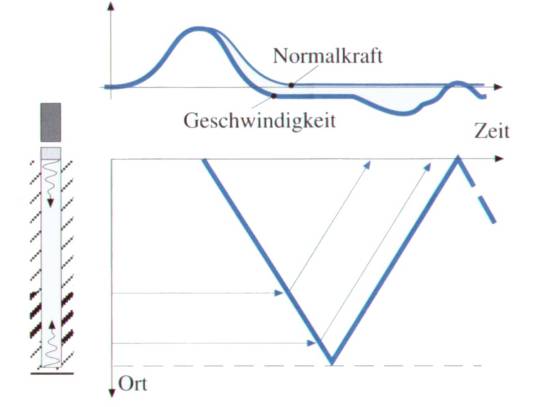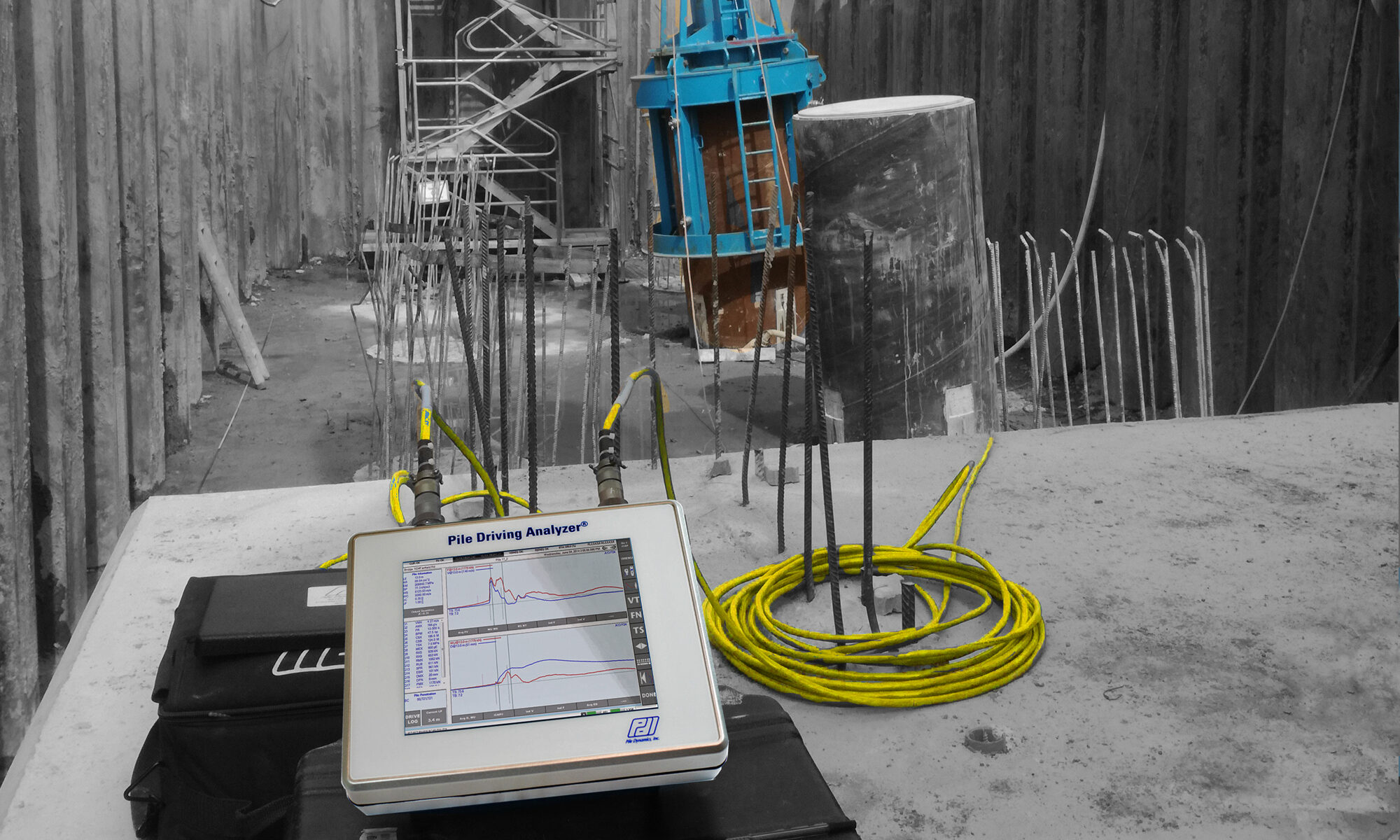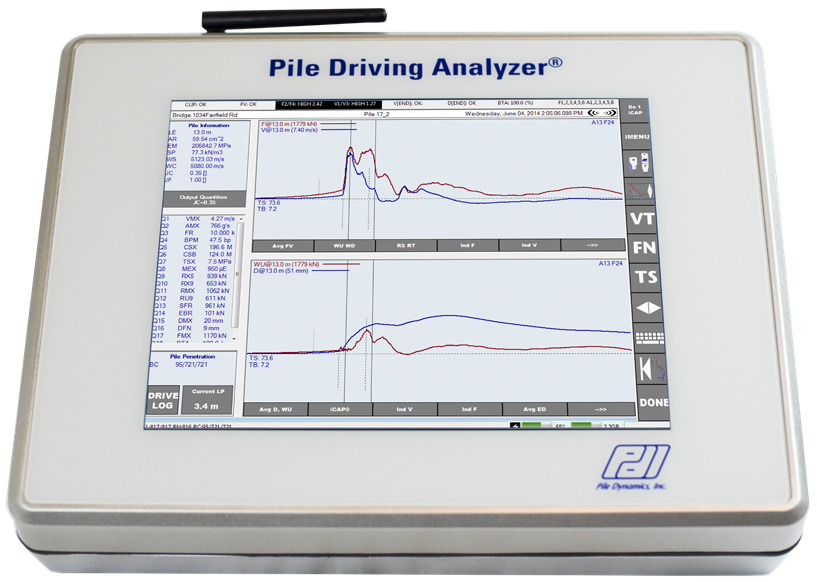To determine the ultimate axial bearing capacity of piles and to secure safety under service load it is necessary to load the pile with a multiple of the service load. By dynamic load testing the load transfer from pile into the soil can be determined. On the basis of the measured values the resistances (shaft resistance and end bearing) actually activated by a blow can be determined.
Dynamic load testing is a cost efficient alternative to static load testing and faster to be carried out.
The testing procedure is accepted as a method for determination of characteristic values of the bearing capacity of piles by Eurocode EC7 and German Institute for Standardization DIN 1054.
GSP provides method statements, procedures and safety verification concepts in line with the project execution and presentation.
Measuring Method
An impact wave is induced into the pile by a hammer blow (drop-weight or ram). This impact can lead to movements of the pile against the soil and activate soil resistance. As the pile is penetrating into the soil the velocity decreases. From the velocity distribution with time, the distribution of shaft resistance with depth can be determined.

Measuring Equipment
For dynamic load testing GSP uses the powerful Pile Driving Analyzer® (models PAK, PAX, 8G), strain transducers and accelerometers made by Pile Dynamics, Inc.
More detailed information about the measuring instruments is given here:
Information about the Pile Driving Analyzer®
Evaluation of Measuring Results
Through a computer simulation (signal matching using CAse Pile Wave Analysis Program – CAPWAP®) the distribution of shaft resistance and end bearing as well as the calculated load settlement curve can be obtained from the measured signals.
The members of GSP have passed the Proficiency Test of the Pile Driving Contractors Association – PDCA.
Offshore Activities
Christian Mayer and Dr. Matthias Schallert are certified for working offshore i.e. for installation of foundation piles for wind turbines, transformer platforms or other offshore structures.
GSP has been involved in consulting, driveability analyses, capacity verification, monitoring of pile driving and performance of restrike tests after short and long waiting times at several offshore projects, i.e.:
-
-
- – Bard Offshore 1 (windfarm, tripiles)
-
- – Helwin1 (transformer station, jacket)
-
- – Borwin Beta (transformer station, jacket)
-
- – Nordsee Ost (Metmast and jackets)
-
- – Baltic2 (jackets and transformer station)
-
Christian Mayer continuously supports a team of GRL engineers in the Persian Gulf.
Driveability Studies
With the software GRLWEAP by Pile Dynamics, Inc. a powerful one-dimensional wave equation analysis program is available, by which stresses, hammer performance and the relation between pile bearing capacity and net set per blow (inverse of blow count per unit depth), the required blows as well as the total pile driving time can be simulated. Information about the software GRLWEAP can be downloaded here:
Information about the GRLWEAP software .
Driveability analysis and driving consultancy has been provided in several projects for onshore, nearshore (jetties), and offshore projects.



